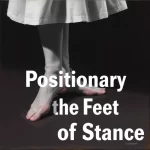The Importance of Understanding Ballet Terminology

Introduction
Ballet, a classical dance form that originated during the Italian Renaissance and later developed in France and Russia, is renowned for its grace, precision, and intricate movements. Central to mastering ballet is a deep understanding of its terminology. Ballet terminology, often derived from French, serves as a universal language that dancers and instructors use to communicate effectively. This article delves into the importance of understanding ballet terminology, exploring its role in training, performance, and the broader appreciation of this elegant art form.
The Foundation of Ballet Training
Consistency and Precision
Ballet terminology provides a standardized vocabulary that ensures consistency and precision in training. Terms like “plié,” “tendu,” and “pirouette” describe specific movements and positions that are universally recognized. This consistency is crucial for dancers who may train with different instructors or in various countries. Understanding these terms allows dancers to execute movements accurately and maintain the high standards required in ballet.
Effective Communication
In a ballet class, clear and concise communication is essential. Instructors use terminology to give directions, corrections, and feedback. For example, an instructor might say, “Perform a grand jeté across the floor,” and every dancer will understand the required movement. This shared language minimizes misunderstandings and ensures that classes run smoothly, allowing dancers to focus on improving their technique.
Enhancing Performance
Choreography and Rehearsals
Choreographers rely on ballet terminology to create and teach dance pieces. When choreographing a ballet, they use specific terms to describe the sequence of movements. Dancers who understand these terms can quickly grasp the choreography, making rehearsals more efficient. This understanding also allows dancers to interpret the choreographer’s vision accurately, resulting in a cohesive and polished performance.
Artistic Expression
Ballet is not just about technical proficiency; it is also a form of artistic expression. Understanding the terminology enables dancers to focus on the nuances of their performance. For instance, knowing the difference between a “petit allegro” and a “grand allegro” helps dancers adjust their energy and style accordingly. This depth of understanding enhances their ability to convey emotions and tell a story through their movements.
Broadening Appreciation and Knowledge
Historical Context
Ballet terminology is steeped in history, reflecting the evolution of the dance form. Terms like “arabesque” and “pas de deux” have historical significance and understanding their origins can deepen one’s appreciation of ballet. This knowledge connects dancers to the rich heritage of ballet and fosters a sense of continuity with past generations of dancers.
Global Connectivity
Ballet is a global art form, and its terminology transcends language barriers. Dancers from different countries can communicate and collaborate effectively because they share a common vocabulary. This global connectivity enriches the ballet community, allowing for the exchange of ideas and techniques. It also opens up opportunities for dancers to perform and train internationally, broadening their horizons and enhancing their careers.
Practical Applications
Learning and Teaching
For students, understanding ballet terminology is fundamental to their education. It allows them to follow instructions accurately and progress through their training. For teachers, using the correct terminology is essential for conveying information clearly and effectively. It also helps in assessing students’ performance and providing constructive feedback.
Injury Prevention
Proper understanding of ballet terminology is also crucial for injury prevention. Terms like “alignment,” “turnout,” and “placement” are not just technical jargon; they are essential concepts that ensure safe and effective movement. Dancers who understand these terms are more likely to maintain proper form, reducing the risk of injuries that can result from incorrect technique.
Frequently Asked Questions (FAQ)
Why is ballet terminology primarily in French?
Ballet terminology is primarily in French because ballet as we know it today was formalized in France during the reign of Louis XIV. The French court played a significant role in the development of ballet, and many of the terms used in ballet were codified during this period.
Can I learn ballet without knowing the terminology?
While it is possible to learn some basic movements without knowing the terminology, a comprehensive understanding of ballet requires familiarity with its vocabulary. Knowing the terminology allows for more effective communication, better understanding of instructions, and a deeper appreciation of the art form.
How can I improve my understanding of ballet terminology?
Improving your understanding of ballet terminology can be achieved through various methods:
- Study: Use ballet dictionaries and online resources to learn the definitions and pronunciations of terms.
- Practice: Apply the terms in your practice sessions to reinforce your learning.
- Observe: Watch ballet performances and pay attention to how movements correspond to the terminology.
- Ask: Don’t hesitate to ask your instructors for clarification on terms you don’t understand.
Is ballet terminology used in other dance forms?
Yes, ballet terminology is often used in other dance forms, especially those that have been influenced by ballet, such as contemporary dance, jazz, and modern dance. Understanding ballet terminology can therefore be beneficial for dancers in various genres.
Are there any resources you recommend for learning ballet terminology?
There are several excellent resources for learning ballet terminology:
- Books: “Technical Manual and Dictionary of Classical Ballet” by Gail Grant is a comprehensive resource.
- Online Platforms: Websites like BalletHub and YouTube channels dedicated to ballet offer valuable tutorials and explanations.
- Apps: Mobile apps like “Ballet Lite” provide interactive ways to learn and practice ballet terms.
Conclusion
Understanding ballet terminology is fundamental to mastering this elegant and demanding art form. It ensures consistency and precision in training, enhances performance, and fosters a deeper appreciation of ballet’s rich history and global reach. Whether you are a student, teacher, or enthusiast, a solid grasp of ballet terminology will enrich your experience and connection to this timeless dance form. By investing time in learning and practicing these terms, you contribute to the preservation and continuation of ballet’s esteemed tradition.





